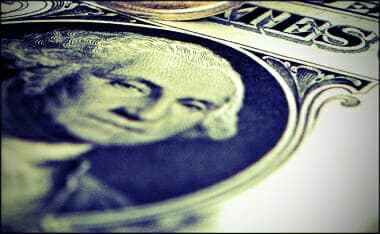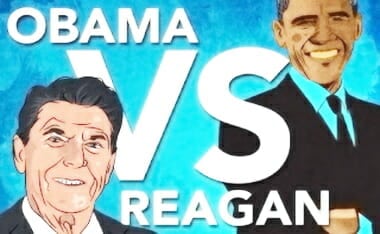With economic pundits predicting disaster over the horizon for the Trump economy, Larry decides to compare the doom and gloom to the months prior to the 1992 presidential election, which propelled Bill Clinton to the presidency. Just what were the pundits saying leading up to that election, and what were they saying directly afterwards? How does this parallel the leadup to 2020? Larry answers all these questions and more. He also gives us a peak into a lucrative career path he decided to pass up, despite his obvious talent.
Recession


How Is Obama’s Economic Recession the Worst? Larry Elder Explains
Larry Elder weighs in with an older article from 2011: Economy: Reagan Gets No Credit, Obama Gets No Blame
Ronald Reagan did nothing. Barack Obama saved the nation from total collapse.
How else to explain the absence of jobless pitchfork-wielding Americans storming the White House? How else to explain the contrast between the explosive Reagan Recovery and the dud on our hands right now? Fortunately, the left is up to the task.
“The secret of the long climb after 1982 was the economic plunge that preceded it. By the end of 1982 the U.S. economy was deeply depressed, with the worst unemployment rate since the Great Depression. So there was plenty of room to grow before the economy returned to anything like full employment,” said left-wing economist, Nobel laureate and New York Times columnist Paul Krugman in 2004. Oh.
An economy that is “deeply depressed,” Krugman insists, or at least he did seven years ago, naturally comes back strong. To what principal factor did Krugman point to in calling the 1982 economy “deeply depressed”? Unemployment. It peaked in the early ’80s at 10.8 percent, even higher than during “The Great Recession” (aka the economy “inherited” by President Barack Obama). In 2010, the unemployment rate hit 10.2 percent, which means the early ’80s still holds the record for the “worst unemployment rate since the Great Depression.”
What most people care about are jobs. By that standard, Reagan faced an even tougher economy. Throw in a higher rate of inflation — 1980’s 13.5 percent average vs. 2011’s 2.6 percent — and much higher prime interest rates — 20 percent vs. 3.25 percent — and the early ’80s looked even grimmer than The Great Recession.
Krugman gives no credit to the Reagan policies of lower taxes, deregulation and a slowdown in the rate of government spending. He believes Reagan’s policies (SET ITAL) harmed (END ITAL) the economy. Krugman approvingly quotes Bill Clinton, who, as a presidential candidate, said: “The Reagan-Bush years have exalted private gain over public obligation, special interests over the common good, wealth and fame over work and family. The 1980s ushered in a Gilded Age of greed and selfishness, of irresponsibility and excess, and of neglect.”
Enter President Barack “Hope and Change” Obama, with a Democratic majority in the House and a supermajority filibuster-proof Senate. Out went policies like reductions in income taxes, corporate taxes, capital gains and dividends. In came transfers of money from one pocket to another to “spread the wealth.”
Under ObamaCare, the Democrats placed the entire health care system under the command and control of the federal government. Through a nearly $1 billion “stimulus” package, Democrats spent money on “shovel-ready” projects with a promise to “save or create” 3.5 million jobs. To rein in “greed” and to fight “climate change,” the Obama administration imposed billions of dollars’ worth of new regulations on businesses. Through “quantitative easting,” the Federal Reserve effectively printed money to keep interest rates low, a widely disputed policy designed to encourage banks to lend and businesses to borrow.
So where is it? When do we see the massive bounce-back from this “deeply depressed” economy, at minimum the kind of bounce-back that occurred in the ’80s in spite of the allegedly harmful policies of Reagan?
Krugman’s analysis of the Reagan recovery — a deep recession equals sharp recovery — tells us that the economy should be storming ahead, especially given Obama’s enlightened leadership. But in the seven quarters following the end of this recession, gross domestic product growth has averaged 2.8 percent. In the seven quarters following the Reagan recession, GDP growth averaged 7.1 percent.
(Below) The C.A.T.O. Institute has been proven correct in their warning!